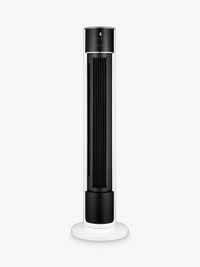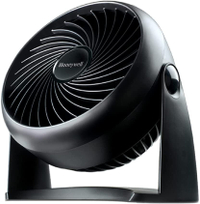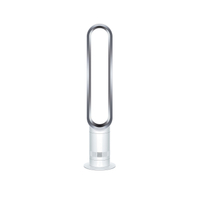What is the best fan for cooling both you and your home?
Here we take a look at the best types of fan for cooling so when the summer heat strikes, you'll know the best options to feel comfortable inside your home — without going all in with an AC unit

Looking at what is the best fan for cooling is a good starting point when considering how to cool yourself down when the summer heat cranks up.
Fans, unlike home air conditioning, can be inexpensive to both buy and run, compact, lightweight, and offer a sense of immediate coolness. From budget buys to sleek bladeless technology, a fan can be a simple solution to stop your home from feeling stuffy and uncomfortable during the hot summer months.
In this article, we'll take a look at several different types of fans, discover how they keep us cool, and share our thoughts on the best cooling fans to buy.
What is the best fan for cooling?
The best fan for cooling is all about finding a fan with an airflow greater than 150m3 per hour (there are 1,000 litres to 1m3).
A cooling fan like the Dyson TP7A Autoreact bladeless tower fan would easily fulfill this criteria with an airflow of 1,332m2 per hour, keeping you fabulously cool in summer as well as having other features like purified air and looking super sleek. But at £399.99 a unit, this fan would be at the higher end of many people's budget scale, which might not suit everybody's "best fan for cooling" requirements.
Meanwhile, this far more basic electriQ high velocity desk fan is only £24.99 with an airflow of 2,000m3 per hour but no air purifying or super sleek look and needs to sit on a desk or table to push air around at the right height.
That's where answering the question of the best fan for cooling gets more complicated as different types of fan have different unique features and strengths, which suit different people's priorities.
What are the main types of cooling fan?
There are four main types of cooling fan to choose from when looking at which fan might be the best choice for you. These are:
Box fans: These fans are compact and budget-friendly. They are best for small spaces but can still pack a punch in terms of air circulation.
Standing fans: Also known as pedestal fans, these direct airflow towards specific areas. They're arguably the least aesthetically pleasing type of fan, but they circulate air efficiently. This electriQhigh velocity pedestal fan provides an airflow of 6,000m3 per hour.
Tower fans: These fans have a slimline design and oscillate to cool larger spaces. They often feature multiple speed settings, as well as convenient timers. The Honeywell QuietSet Tower Fan is a popular tower fan, as it has 5 distinct speed settings and 75° oscillation, which allows it to cool a whole room quickly and quietly.
Bladeless fans: The best known bladeless fans are those made by Dyson. Fans such as the Dyson TP00 Pure Cool provide a consistent stream of air circulation, are safe to use, and can even purify the air in your home. All of Dyson's purifying fans use Air Multiplier™ technology with 350-degree oscillation, allowing them to project up to 290 litres of air per second.
Do cooling fans actually cool the air?
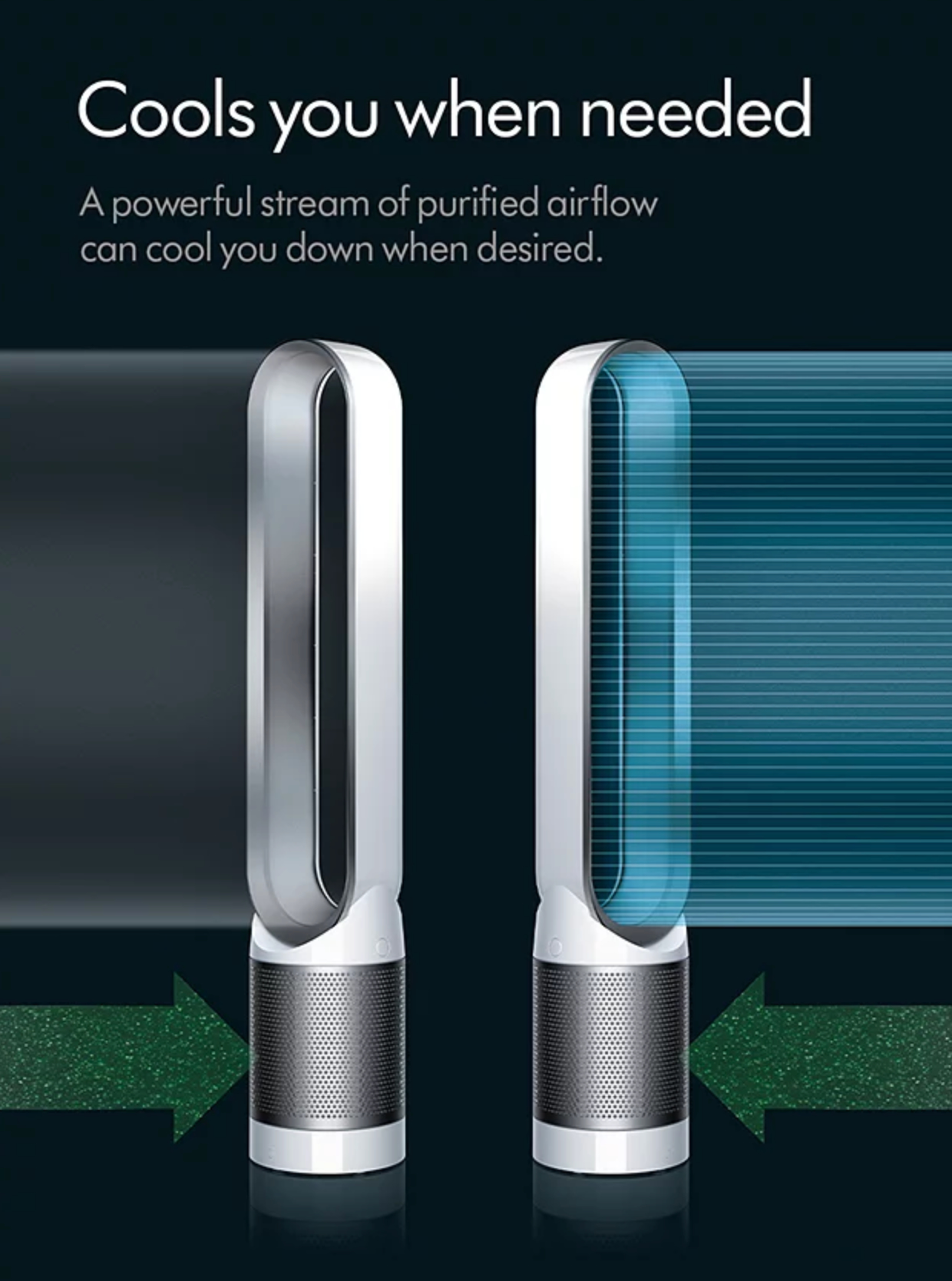
Unlike air conditioning units, fans don't actually lower the temperature of the air. Instead, they create a wind-chill effect. By circulating the air in a room, they evaporate sweat from your skin which makes you feel cooler.
If you're trying to figure out how to keep a house cool in summer, then it pays to ensure you are using your fan in the most effective way. We suggest directing them upwards, so no large items of furniture are blocking the flow of air. Similarly, you could try positioning a bowl of ice water in front of a fan, so the frosty water particles will be circulated throughout the room.
When Evan Stevens, Head of Environmental Care at Dyson, shared his tips for keeping your house cool, he suggested running a cooling fan during the night, as well as opening your windows to allow cooler air to enter the house and circulate.
How to choose the perfect cooling fan
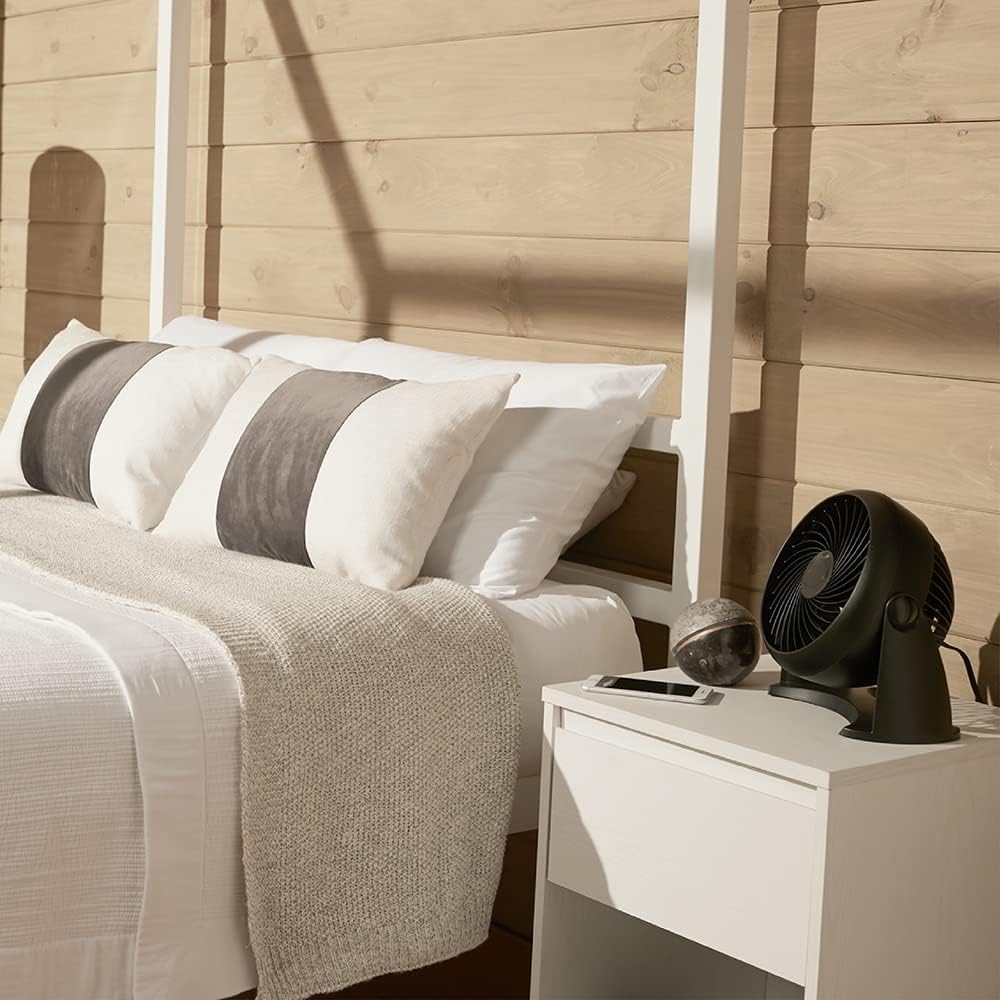
Fans come in all shapes and sizes, with price tags ranging from budget-friendly to £399 plus. So, how do you find your perfect match? Here's a simple guide:
Cooling power: If you want something that can really bring down the heat, look for a fan with an airflow greater than 150m3 per hour.
Noise: We all want a fan that does its job without making a racket. The quietest fans can operate at a whisper-quiet 20dB, rising to around 70dB at full speed. Bladeless fans also tend to be the quietest option.
Aesthetic: Many fans aren't exactly easy on the eye. If design matters to you, you might want to splurge a little on a sleek Dyson or a slimline tower fan, like the John Lewis Tower Fan, 42 inch.
Energy efficiency: Powerful fans don't necessarily consume more energy. In fact, larger fans can often cool a room effectively at lower speeds compared to smaller fans running at higher speeds. Turning off fans when they're not in use can significantly reduce energy consumption. For more information on energy efficiency, you may want to read our handy guide: how much does it cost to run a fan?
Our pick of the best cooling fans
£95
Standing at 107cm high this fan gives a good length of coverage no matter where it's pointed, plus it oscillates if you want to keep cool over a larger space.
Honeywell TurboForce Power Fan
RRP £29.99 | £24
This compact table fan has 3 powerful speed settings and a 90-degree oscillating head.
Dyson AM07 Cool Oscillating Bladeless Tower Fan
£349
A powerful but quiet fan with 10 airflow settings, from a gentle breeze to heatwave-ready cooling
Get the Homebuilding & Renovating Newsletter
Bring your dream home to life with expert advice, how to guides and design inspiration. Sign up for our newsletter and get two free tickets to a Homebuilding & Renovating Show near you.

Gabriella is an interiors journalist and has a wealth of experience creating interiors and renovation content. She was Homebuilding & Renovating's former Assistant Editor as well as the former Head of Solved at sister brand Homes & Gardens, where she wrote and edited content addressing key renovation, DIY and interior questions.
She’s spent the past decade crafting copy for interiors publications, award-winning architects, and leading UK homeware brands. She also served as the Content Manager for the ethical homeware brand Nkuku.
Gabriella is a DIY enthusiast and a lover of all things interior design. She has a particular passion for historic buildings and listed properties, and she is currently in the process of renovating a Grade II-listed Victorian coach house in the West Country.
